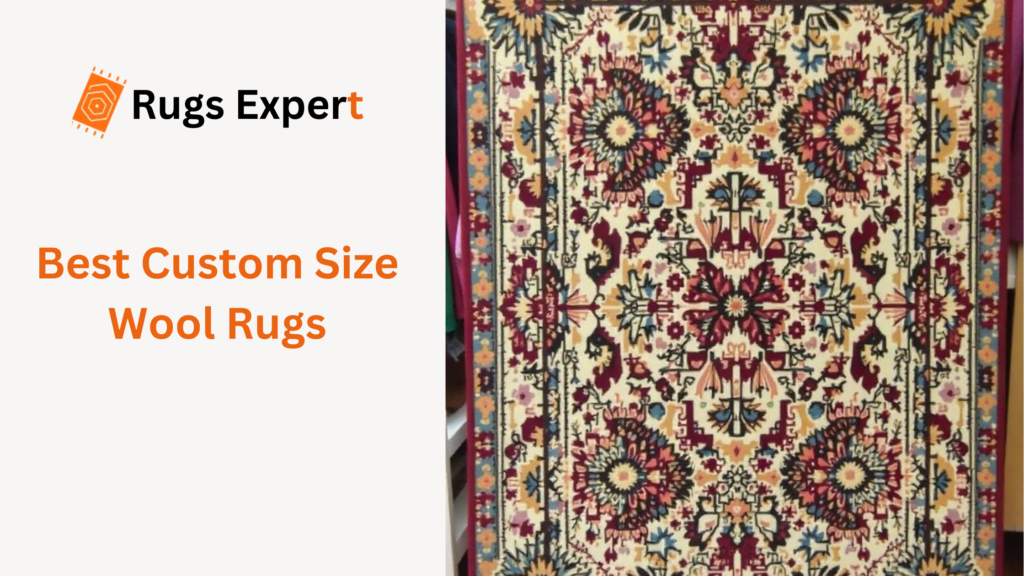
Whether you’re furnishing an awkwardly shaped room, seeking to unify an open-concept living area, or simply wanting something uniquely yours, custom wool rugs provide unparalleled versatility.
This comprehensive guide explores everything you need to know about these luxurious, tailor-made floor coverings, which combine timeless materials with personalized dimensions.
Understanding Custom Size Wool Rugs
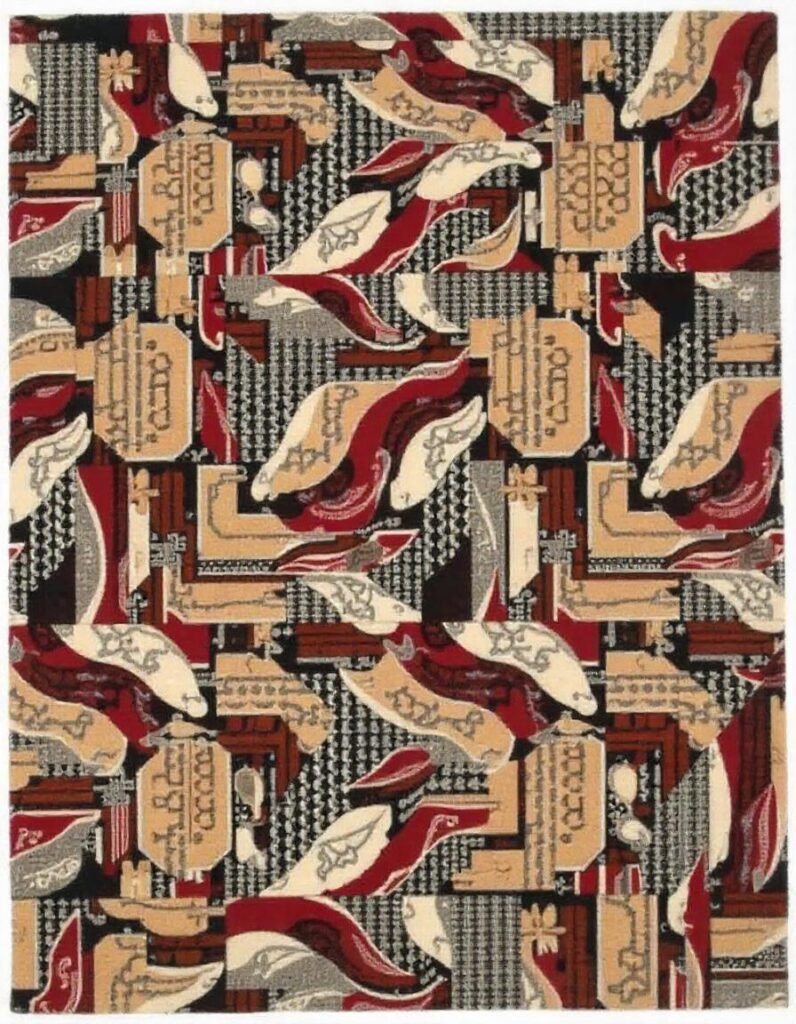
Custom size wool rugs are exactly what their name suggests: floor coverings made from natural wool fibers that are crafted to your exact specifications rather than standard market dimensions. Unlike mass-produced rugs that come in predetermined sizes (typically 5’×8′, 8’×10′, 9’×12′, etc.), custom rugs are manufactured according to the precise measurements you provide.
Also Read: What Are the Standard Rug Sizes: A Room-by-Room Breakdown
The distinction between standard and custom sizes extends beyond mere dimensions. While standard rugs might require you to compromise on room layout or leave awkward gaps between the rug and walls, bespoke wool rugs eliminate these issues entirely.
The Exceptional Qualities of Wool
Wool stands as the premier natural fiber for rugs, and for good reason. This remarkable material offers several advantages that synthetic alternatives simply cannot match:
- Durability: Wool fibers can bend up to 20,000 times without breaking, making wool rugs extraordinarily resilient to foot traffic.
- Natural stain resistance: The outer layer of wool fibers contains lanolin, a natural oil that repels liquids and prevents stains from penetrating.
- Temperature regulation: Wool naturally insulates against both heat and cold, creating a comfortable surface year-round.
- Fire resistance: Unlike many synthetic materials, wool is naturally flame-resistant without chemical treatments.
- Air purification: Wool can actually trap airborne contaminants and improve indoor air quality.
Common Misconceptions About Custom Rugs
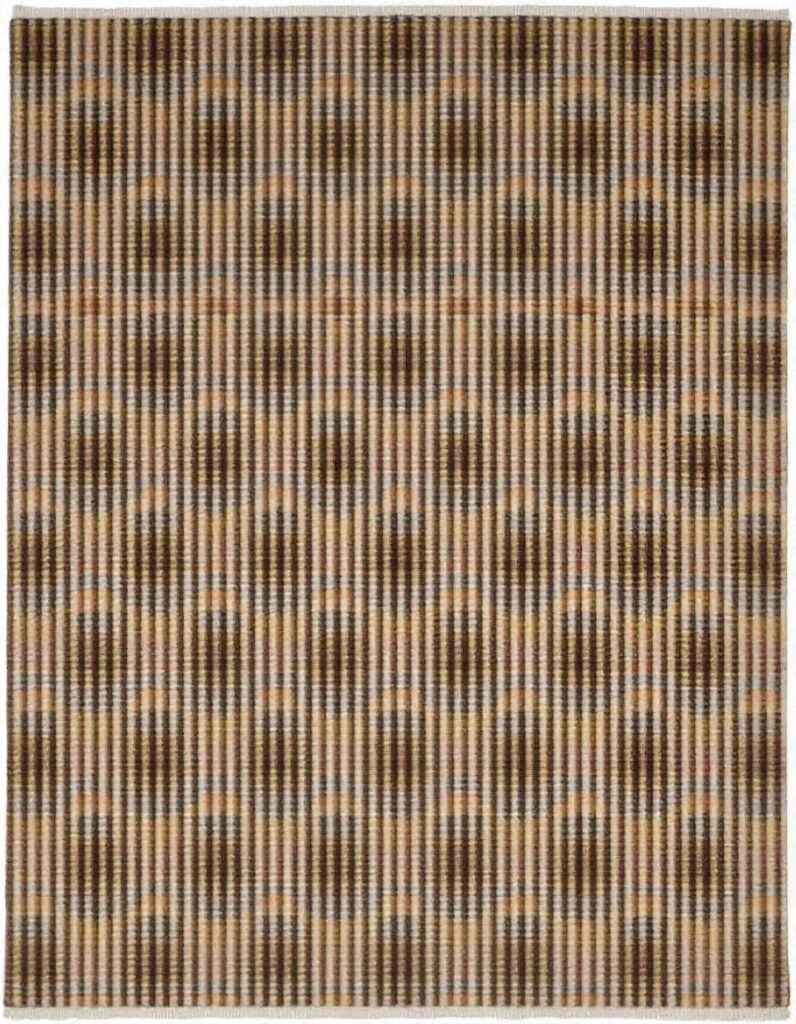
Many potential buyers hesitate to explore custom options due to several misunderstandings:
| Misconception | Reality |
| Custom rugs take months to produce | Many manufacturers can deliver in 4-8 weeks, comparable to higher-end standard rugs |
| The cost is prohibitively expensive | While custom rugs do command a premium, the price difference may be as little as 15-30% for basic customization |
| The ordering process is complicated | Modern manufacturers have streamlined the process with digital design tools and clear measurement guidelines |
| Custom means hand-knotted only | Custom size wool rugs are available in various construction methods, including tufted, flat-woven, and machine-made options |
| Returns are impossible | Many reputable companies offer guarantees against manufacturing defects and measurement errors |
Why Choose Custom Size Wool Rugs?
The decision to invest in a custom size wool rug rather than settling for a standard option offers numerous advantages that extend far beyond mere aesthetics. These benefits combine to create floor coverings that truly enhance your living environment in meaningful ways.
Perfect Fit for Unique Spaces
One of the most compelling reasons to choose custom dimensions is the ability to perfectly fit any space. Consider these scenarios where standard sizes simply won’t suffice:
- Unusual room configurations: L-shaped living areas, curved walls, or bay windows create spaces where standard rectangular rugs leave awkward exposed areas.
- Open concept homes: Defining separate functional zones within larger open spaces requires precisely sized rugs to create visual boundaries.
- Narrow rooms: Hallways, galley kitchens, or long entryways often need runners at specific lengths that standard options don’t provide.
- Oversized rooms: Very large spaces may require rugs beyond standard maximum dimensions to avoid appearing undersized.
Design Flexibility and Personalization
Custom wool rugs offer unmatched creative freedom. Beyond size, you can personalize:
- Shape: Beyond rectangular options, explore circles, ovals, octagons, or completely freeform organic shapes
- Color palette: Match exact paint colors, fabric swatches, or artwork in your space
- Pattern scale: Adjust the size of patterns to properly proportion with your room dimensions
- Border treatments: Select from dozens of border styles, widths, and colors
- Monograms or motifs: Incorporate personal symbols, family crests, or meaningful designs
Measuring for Your Custom Size Wool Rug
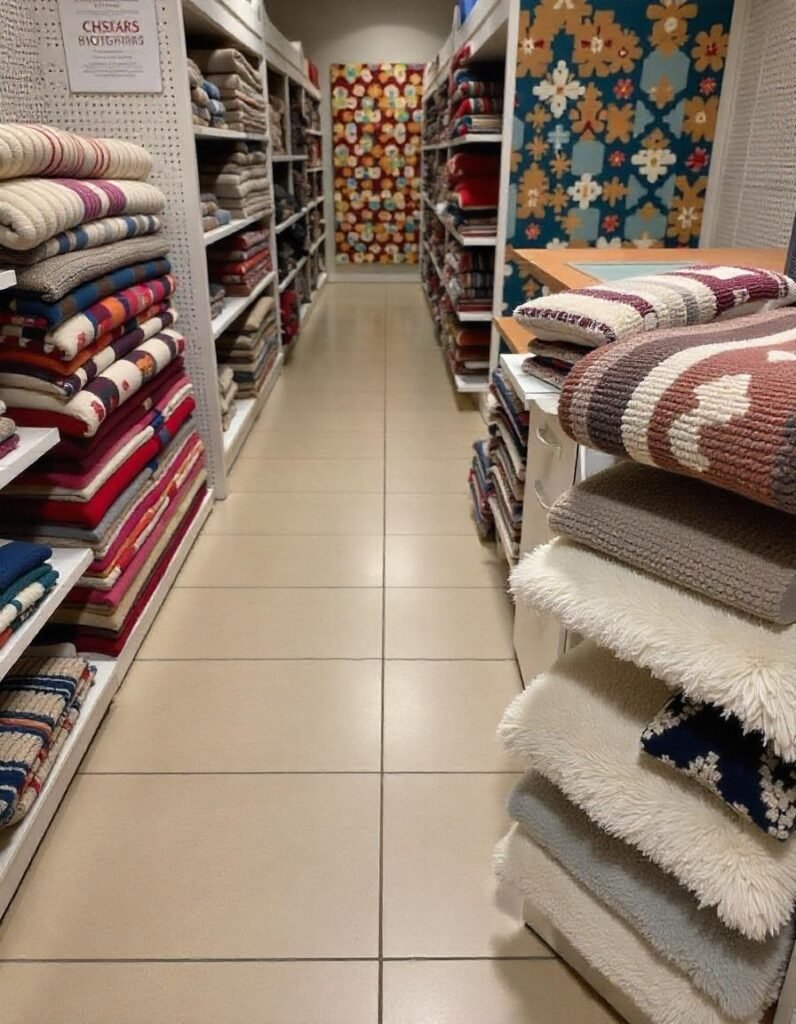
Accurate measurements form the foundation of a successful custom wool rug project. Measuring precisely will ensure your investment fits perfectly and fulfills its intended purpose in your space.
Also Read: What Size Rug for A 60-Inch Round Table? Find the Perfect Fit
Step-by-Step Measurement Guide
Follow these steps to obtain the most accurate measurements for your custom size wool rug:
- Clear the area: Remove furniture from the space or push it to the edges to create a clear floor area.
- Create a preliminary outline: Use painter’s tape to map out the desired rug placement directly on the floor.
- Refine the outline: Adjust the tape until you’re satisfied with the placement, considering furniture arrangements and traffic flow.
- Measure length and width: Using a steel measuring tape (not fabric or retractable), measure the length and width at multiple points. Record the longest measurements for each dimension.
- Check for square corners: Measure diagonally from corner to corner in both directions. If the measurements match, your corners are square. If not, you may need to specify a non-rectangular shape.
- Consider clearances: Allow appropriate clearance from walls (typically 8-24 inches) and ensure consistent borders around the rug area.
- Document with photos: Take photos of your taped outline with the measuring tape visible for reference when ordering.
- Double-check all measurements: Have a second person verify your numbers before finalizing your order.
“The most common mistake I see with custom rugs isn’t in the production—it’s in the measurement,” explains flooring specialist Thomas Warren. “Taking multiple measurements from different points in the room can reveal irregularities you might not notice visually.”
Essential Measuring Tools
Professional designers recommend these tools for accurate measurement:
- Steel measuring tape (25′ minimum): Provides the most accurate measurements without stretching
- Laser measure: Helpful for very large spaces or checking straight lines
- Right-angle square: Ensures corners are properly squared
- Painter’s tape: For creating visual outlines without damaging floors
- Graph paper: For sketching the room to scale
- Digital camera or smartphone: For documenting the space and measurements
Common Measuring Mistakes to Avoid
| Mistake | Consequence | Prevention |
| Using cloth or retractable tapes | Measurements may be off by several inches | Use only rigid steel measuring tapes |
| Measuring once | Fails to account for irregular walls or floors | Take multiple measurements at different points |
| Ignoring furniture placement | Rug may not accommodate furniture properly | Measure with furniture layout in mind |
| Failing to account for door clearance | Account for the pile height at transition points | Check all door swings in the area |
| Neglecting pile height in transitions | Creates tripping hazards between surfaces | The rug may not accommodate furniture properly |
| Rounding measurements | Custom means exact—every fraction matters | Record measurements to the nearest 1/8 inch |
According to a survey by the National Flooring Retailers Association, measurement errors account for over 65% of customer dissatisfaction with custom floor coverings [Source: NFRA Industry Report].
Special Considerations for Unusual Room Shapes
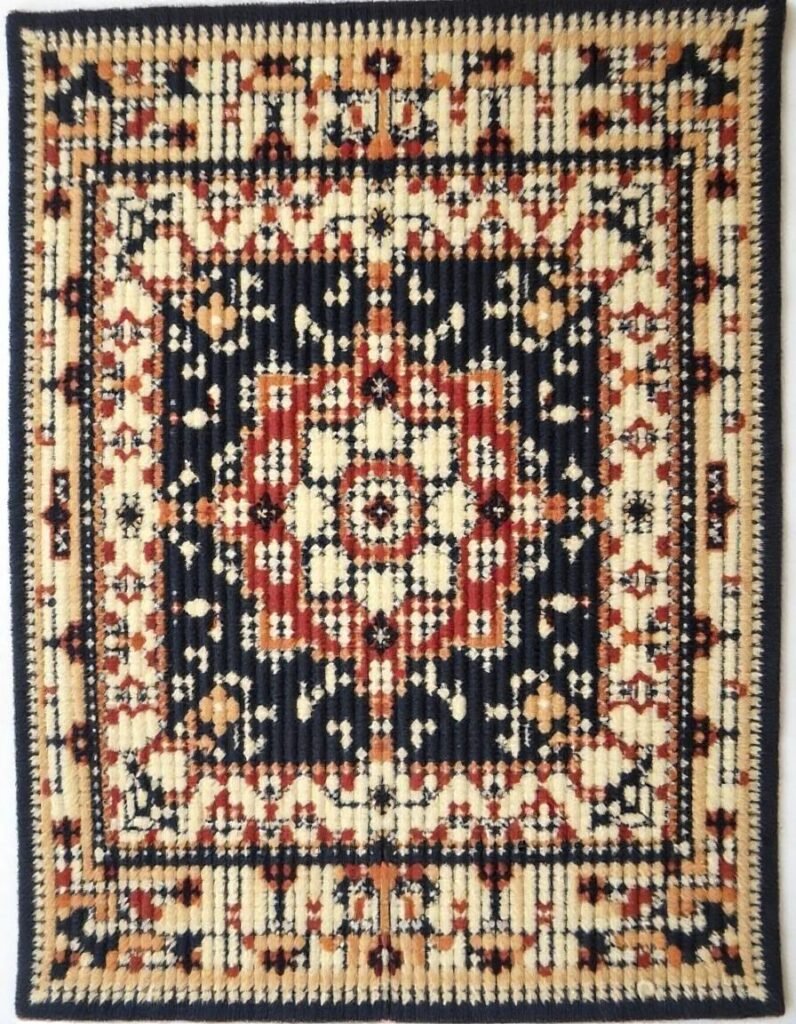
For non-rectangular spaces, additional steps are necessary:
- Curved walls: Create a template using kraft paper or cardboard and trace the curve.
- Multiple angles: Divide the space into triangles or rectangles, measure each separately, and combine the measurements.
- Split-level areas: Determine if one rug or multiple rugs would better serve the space.
- Built-in features: Account for fireplace hearths, built-in bookshelves, or other permanent features.
“For truly complex spaces, consider hiring a professional measurer,” advises interior architect Lisa Chen. “The cost is minimal compared to the investment in a custom wool rug, and it provides peace of mind that your specifications will be exactly right.”
Design Options for Custom Wool Rugs
The design possibilities for custom size wool rugs are virtually limitless. When you’re not constrained by pre-made options, you can create floor coverings that perfectly express your aesthetic vision while complementing your existing décor.
Popular Patterns and Styles
Custom wool rugs can be created in any design style, from traditional to ultramodern. Some of the most requested styles include:
- Traditional Persian and Oriental: Timeless designs featuring intricate floral motifs, medallions, and borders
- Contemporary geometric: Bold shapes, clean lines, and minimalist approaches
- Transitional: Blending elements of traditional and contemporary for versatile appeal
- Abstract expressionist: Artistic, painterly designs with fluid forms and creative color use
- Moroccan-inspired: Geometric diamond patterns and tribal motifs
- Art Deco: Symmetrical designs with bold curves and stepped forms
- Scandinavian: Simple, nature-inspired patterns with clean lines and minimal colors
- Custom pictorial: Landscape scenes, architectural elements, or representational imagery
“The resurgence of interest in traditional patterns reinterpreted with contemporary color palettes has been particularly strong over the past two years,” notes trend forecaster Michelle Lin from Design Futures Institute. “We’re seeing a fascinating blend of heritage techniques with modern sensibilities.” [Source: Design Futures Quarterly]
Color Considerations and Trends
Color selection dramatically impacts how your custom wool rug will function in your space:
- Room-defining colors: Bold colors can establish the room’s palette and serve as the foundation for other design choices
- Neutral foundations: Subtle, neutral-toned rugs provide versatility and longevity as other décor elements change
- Color psychology: Consider how different hues affect mood—blues create calm, reds energize, greens balance
- Practical considerations: Darker colors and patterns hide soil in high-traffic areas
- Complementary vs. contrasting: Decide whether your rug should blend harmoniously or create dramatic contrast
According to the International Wool Textile Organisation, wool accepts dyes more readily than most fibers, resulting in richer, more vibrant colors with superior colorfastness [Source: IWTO Wool Research].
Current color trends for custom wool rugs include:
- Earthy, grounded tones (terracotta, olive, ochre)
- Desaturated blues and greens
- Warm neutrals replacing cool grays
- Jewel tones for accent colors
- Vintage-inspired palettes with a gently faded appearance
Pile Height Variations
The pile height of your custom wool rug affects both its appearance and function:
- Flat weave (no pile): Easiest to clean, ideal for dining areas and high-traffic zones
- Low pile (¼”-½”): Good balance of comfort and practicality, suitable for most living spaces
- Medium pile (½”-¾”): Adds warmth and comfort, works well in bedrooms and living rooms
- High pile (¾”-1″): Maximum luxury and softness, best for low-traffic areas like bedrooms
- Shag (1″+): Ultra-plush statement pieces, requires more maintenance
“The trend toward tactile variation within a single rug has been growing,” explains textile designer James Mercer. “We’re seeing more designs incorporating multiple pile heights to create textural interest and define patterns through dimension rather than just color.”
The Custom Wool Rug Creation Process
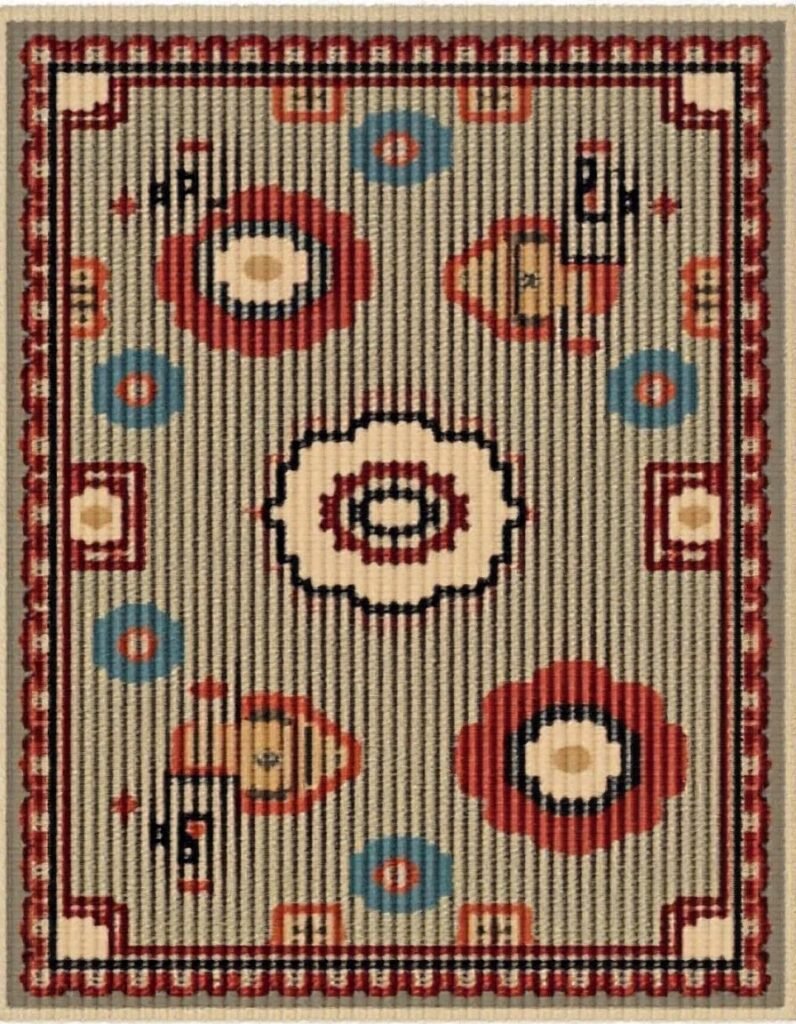
Understanding the journey from concept to completed custom size wool rug helps set realistic expectations and ensures a smooth process. The creation of these bespoke floor coverings involves several specialized stages that contribute to their quality and uniqueness.
Timeline Expectations
The production of custom wool rugs typically follows this timeline:
- Design and approval phase: 1-2 weeks
- Initial consultation and requirements gathering
- Design development and rendering
- Sample approval (if requested)
- Final design confirmation
- Production phase: 3-16 weeks (depending on technique)
- Material preparation and dyeing
- Construction (varies by method)
- Finishing and quality control
- Washing and blocking
- Shipping and delivery: 1-3 weeks
- Packaging and preparation for transport
- Transit time (varies by location)
- Final inspection upon arrival
According to the Custom Flooring Manufacturers Association, hand-knotted custom wool rugs typically take the longest to produce, while machine-made custom rugs offer the quickest turnaround times [Source: CFMA Production Standards].
From Design to Production: The Process
The creation of a custom size wool rug follows these key steps:
- Design development: Working from your specifications, designers create detailed renderings or digital mockups showing exactly how the finished rug will appear.
- Material selection: Wool varieties are chosen based on the desired characteristics of the finished rug. Options include:
- New Zealand wool (soft, bright white base for vivid colors)
- Tibetan highland wool (extremely durable with natural sheen)
- Scottish wool (coarser texture ideal for high-traffic areas)
- Blended wools (combining characteristics for specific performances)
- Dyeing process: Wool is dyed using either:
- Pot dyeing (entire yarn batches dyed together for solid colors)
- Space dyeing (creating variegated colors within single strands)
- Overdyeing (layering colors for complex hues)
- Construction begins: Using the approved design and dyed materials, artisans begin creating your rug using the selected technique.
- Quality control checkpoints: Throughout production, the rug undergoes multiple inspections to ensure adherence to specifications.
- Finishing processes: Once construction is complete, the rug undergoes:
- Washing to remove processing residues
- Stretching and blocking to perfect dimensions
- Shearing to even the pile (if applicable)
- Edge finishing according to specifications
- Final inspection: Before shipping, each rug undergoes a comprehensive quality assessment.
Hand-Knotted vs. Hand-Tufted vs. Machine-Made Options
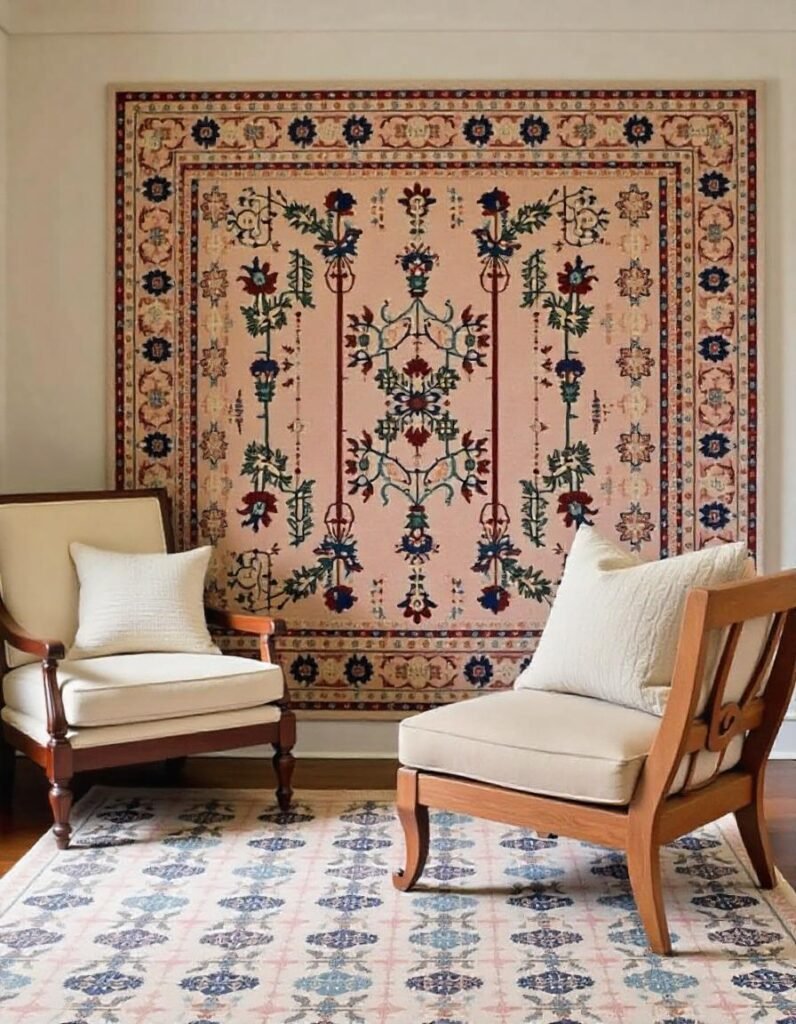
Each construction method offers different characteristics for custom wool rugs:
$
| Construction Method | Characteristics | Durability | Production Time | Relative Cost |
| Hand-Knotted | Individually tied knots on vertical warps | Exceptional (50+ years) | 3-9 months | |
| Hand-Tufted | Wool tufts punched through backing with tufting gun | Good (15-20 years) | 1-3 months | $$$ |
| Hand-Loomed | Created on manual loom | Very good (20-30 years) | 1-2 months | $$$$ |
| Machine-Made | Produced on power looms | Good (10-20 years) | 2-6 weeks | $$ |
| Flat-Woven | No pile, woven like fabric | Excellent (30+ years) | 1-3 months | $$$ |
A hand-knotted wool rug is an heirloom investment, while a quality machine-made custom rug offers excellent value for spaces that may need updating more frequently.
Quality Control Measures
Reputable manufacturers employ rigorous quality control for custom size wool rugs:
- Material testing: Wool is tested for tensile strength, color retention, and purity
- Construction verification: Knot count, pile height, and pattern accuracy are checked against specifications
- Dimensional accuracy: Multiple measurements ensure the finished rug matches ordered dimensions (typically within ±0.5%)
- Visual inspection: Trained quality control specialists examine the entire rug under specialized lighting
- Wash testing: Sample cleaning to verify colorfastness and dimensional stability
The Carpet and Rug Institute notes that quality custom wool rugs should maintain less than 1% dimensional change after professional cleaning [Source: CRI Quality Standards].
Cost Factors for Custom Size Wool Rugs
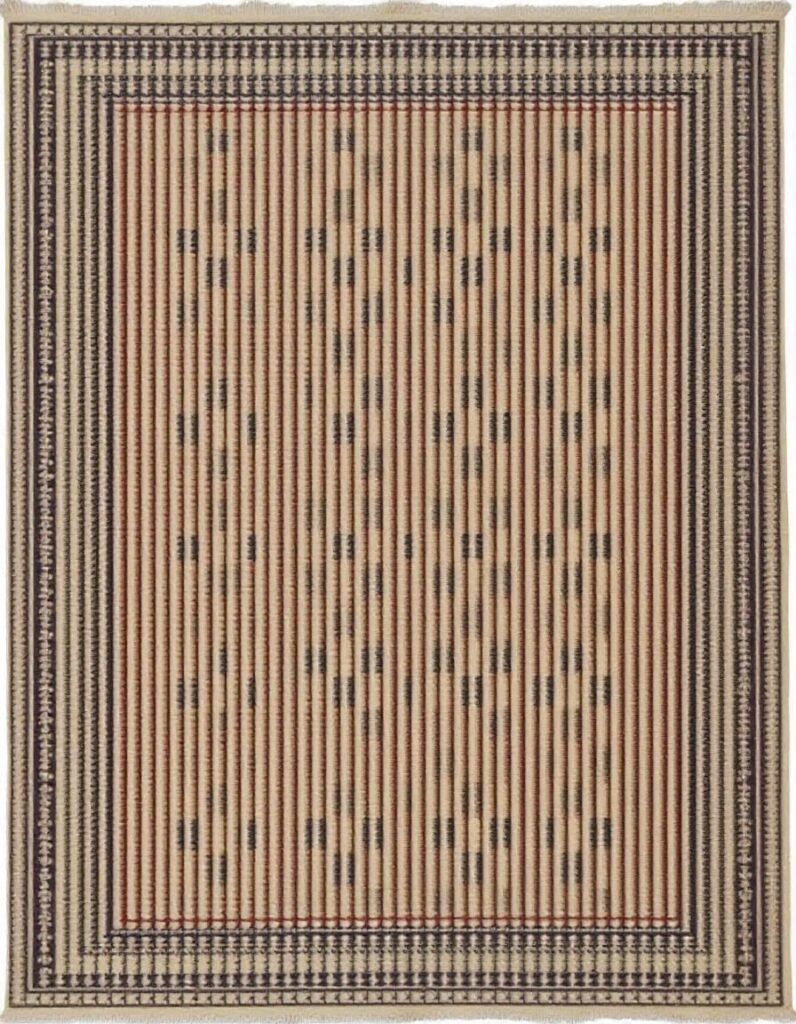
When investing in a custom size wool rug, understanding what impacts the price helps you make an informed decision. These beautiful floor coverings represent value beyond their initial cost when you consider their longevity and impact on your space.
Price Range Expectations
Custom wool rugs vary widely in price depending on several factors. Knowing the general price ranges helps set realistic budget expectations.
Most custom size wool rugs fall into these general price categories:
- Entry-level custom: $30-60 per square foot
- Mid-range custom: $60-120 per square foot
- High-end custom: $120-300+ per square foot
For perspective, a 9’×12′ custom wool rug (108 square feet) might range from $3,240 to $13,000 or more. Remember that these are general estimates, and your specific requirements will determine the final cost.
“Custom doesn’t automatically mean unaffordable,” explains Jessica Morgan from Custom Home Furnishings. “Many customers are surprised to find that the premium for perfect sizing is often less than they expected, especially when compared to the cost of standard designer rugs.”
Factors Affecting Pricing
Several key elements determine the final cost of your custom wool rug:
1. Construction method:
- Hand-knotted rugs (highest cost)
- Hand-tufted rugs (moderate cost)
- Machine-made custom rugs (most affordable)
2. Wool quality and origin:
- Premium New Zealand wool commands higher prices
- Specialty wools (Tibetan, Scottish) affect pricing
- Wool blends can offer quality at lower price points
3. Design complexity:
- Intricate patterns with many colors cost more
- Simple designs or solid colors reduce expenses
- Border complexity impacts labor and materials
4. Pile height and density:
- Higher pile and greater density use more wool
- Denser construction increases durability but raises costs
- Multi-level pile designs require additional labor
5. Size considerations:
- Very large rugs may have disproportionately higher costs
- Unusual shapes require special handling
- Extra-wide rugs may need special looms
“When comparing quotes from different manufacturers, ensure you’re evaluating based on the same specifications,” advises interior designer Mark Williams. “Density, construction method, and wool quality significantly impact both price and longevity.” [Source: Interior Design Association]
Value Comparison with Standard Sizes
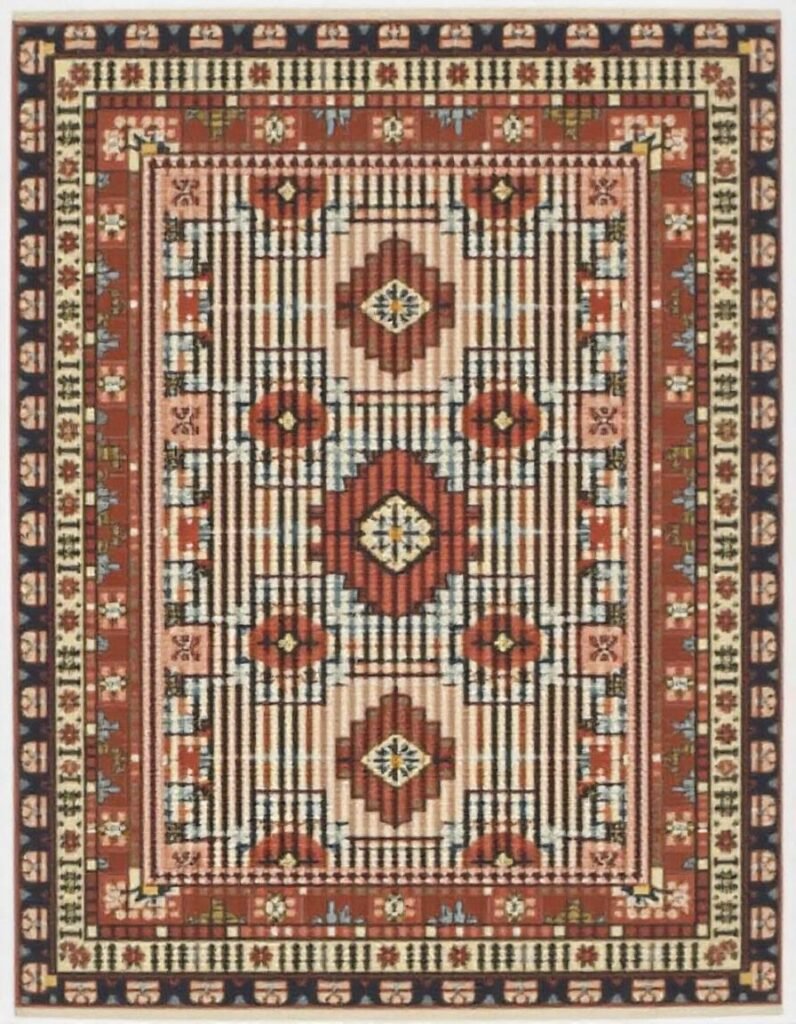
When evaluating the investment in a custom size wool rug versus standard options, consider:
| Consideration | Standard Size Rugs | Custom Size Wool Rugs |
| Initial cost | Lower upfront price | Higher initial investment |
| Fit in space | Often, compromise on size | Perfect fit for your space |
| Waste | May require purchasing oversized and cutting down | No material waste |
| Design options | Limited to available inventory | Unlimited design possibilities |
| Replacement | Easier to replace with identical item | One-of-a-kind creation |
| Resale value | Moderate retention | Better value retention for quality pieces |
According to a 2023 consumer survey by Home Design Quarterly, homeowners who invested in custom rugs reported 89% satisfaction with their purchase even years later, compared to 62% satisfaction among those who chose standard sizes [Source: Home Design Quarterly].
Caring for Your Custom Wool Rug
Proper maintenance ensures your custom size wool rug maintains its beauty and extends its lifespan. With the right care routine, your investment will serve you beautifully for many years.
Cleaning and Maintenance Best Practices
Daily and weekly maintenance keep your custom wool rug looking its best:
Regular care routine:
- Vacuum 1-2 times weekly using suction-only setting (avoid beater bars)
- Rotate rug 180° every 6 months to ensure even wear
- Address spills immediately following the proper techniques
- Use rug pads to prevent slipping and reduce wear
- Keep out of direct sunlight when possible to prevent fading
“The biggest mistake people make is neglecting regular vacuuming,” explains cleaning expert Robert Chen. “Removing surface dirt before it settles deep into the fibers is the single most important maintenance step.”
For best results, use vacuum cleaners with adjustable height settings and avoid models with aggressive rotating brushes that can damage wool fibers. The Carpet and Rug Institute recommends that vacuums certified with the CRI Seal of Approval be used for wool rugs [Source: CRI Approved Products].
Professional Cleaning Recommendations
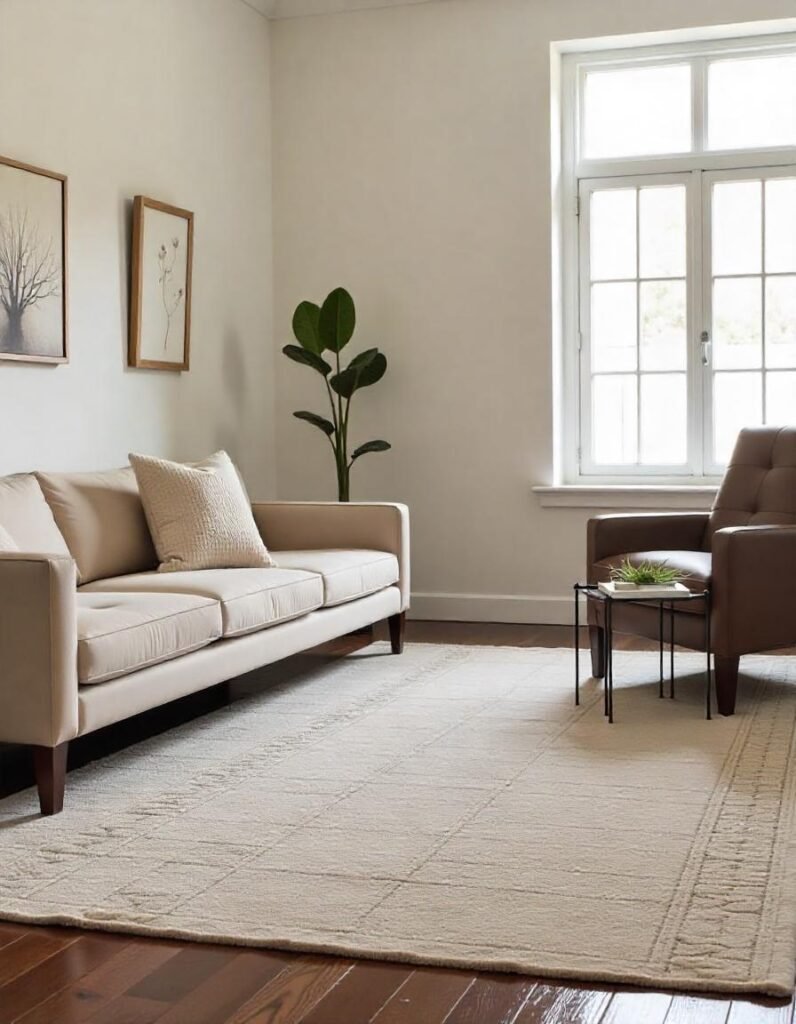
Even with regular maintenance, periodic professional cleaning is essential:
- Frequency: Professional cleaning every 1-3 years, depending on traffic and conditions
- Method selection: Ensure cleaners use wool-safe, pH-neutral products
- Certification: Choose cleaners certified in wool rug care through organizations like the Institute of Inspection, Cleaning and Restoration Certification (IICRC)
- Avoid steam cleaning: High heat can shrink wool and damage backing
- Pre-cleaning inspection: Professional assessment for special care needs before cleaning begins
Dealing with Spills and Stains
Quick action is crucial when accidents happen:
- Blot immediately: Use clean white cloths or paper towels to blot—never rub—to remove liquid
- Water-based spills: Blot with clear water and mild wool-safe detergent
- Oil-based spills: Absorb as much as possible, then use appropriate wool-safe solvent
- Solid materials: Scrape up carefully with a dull edge before treating the remaining stain
- Avoid home remedies: Common suggestions like baking soda or vinegar can damage wool fibers
- Test first: Always test cleaning solutions on an inconspicuous area first
For stain-specific guidance, keep this quick reference handy:
| Stain Type | Immediate Action | Follow-Up Treatment |
| Red wine | Blot with cold water | Wool-safe detergent solution |
| Coffee/tea | Blot with cold water | Mild detergent solution |
| Pet accidents | Blot thoroughly | Enzymatic cleaner formulated for wool |
| Grease/oil | Absorb with paper towel | Wool-safe dry cleaning solvent |
| Ink | Blot immediately (don’t rub) | Professional cleaning recommended |
| Blood | Cold water only | Consult a professional for the remaining stains |
Seasonal Care Tips
Adjust your care routine throughout the year to protect your investment:
Spring/Summer:
- Deep cleaning is ideal as the weather allows for better drying
- Watch for increased sun exposure that could cause fading
- In humid environments, ensure good air circulation to prevent mildew
Fall/Winter:
- Increase vacuum frequency during high indoor traffic seasons
- Use caution with heating systems that can reduce humidity
- Take special care with salt and snow residue in entryway rugs
“Seasonal transitions are ideal times to inspect your custom wool rugs for any needed maintenance,” suggests home care expert Thomas Reed. “Catching small issues early prevents more significant problems later.”
Where to Purchase Quality Custom Size Wool Rugs

Finding the right manufacturer or retailer for your custom wool rug ensures you receive both quality craftsmanship and good value. This section guides you through the selection process.
Reputable Manufacturers and Retailers
When shopping for custom size wool rugs, consider these sources:
Specialized rug studios
- Often provides end-to-end service from design to installation
- Typically offer the highest quality and most personalized service
- Usually maintain relationships with master weavers and artisans
- May have showrooms where you can view samples and materials
Interior designers and decorators
- Access to trade-only manufacturers
- Experience coordinating rugs with overall design schemes
- Can manage the entire custom process on your behalf
- Often receive preferential pricing that may offset their fees
Custom flooring retailers
- Broader selection of construction methods and price points
- Experience with measuring and fitting challenges
- Often provide installation services
- May offer better warranties or service guarantees
Direct-to-consumer custom rug companies
- Often provide good value by eliminating middlemen
- Typically offer user-friendly design interfaces
- May have more limited construction options
- Usually ship directly to your home
“The best source depends on your specific needs and budget,” explains retail analyst Thomas Garcia. “For complex designs or high-end requirements, specialized studios typically provide superior results, while direct-to-consumer companies often offer better value for simpler projects.”
Online vs. In-Store Shopping Experience
Both shopping approaches offer distinct advantages for custom wool rugs:
In-store benefits:
- Touch and feel actual wool samples
- See color accuracy in various lighting conditions
- Consult directly with design experts
- Easier to assess true quality and construction
- Often provides more personalized service
Online benefits:
- Typically wider selection of options
- Often lower overhead translates to better pricing
- Convenience of designing from home
- Digital visualization tools for seeing designs in rooms
- Easy comparison between multiple vendors
According to a 2024 consumer survey, 68% of custom rug buyers conducted research online but 72% preferred in-person consultation before finalizing their purchase [Source: Consumer Home Furnishings Report].
“The ideal approach often combines both methods,” suggests retail expert Michelle Chen. “Research extensively online to understand options and pricing, then visit showrooms to make final decisions about materials and colors.”
Questions to Ask Before Purchasing
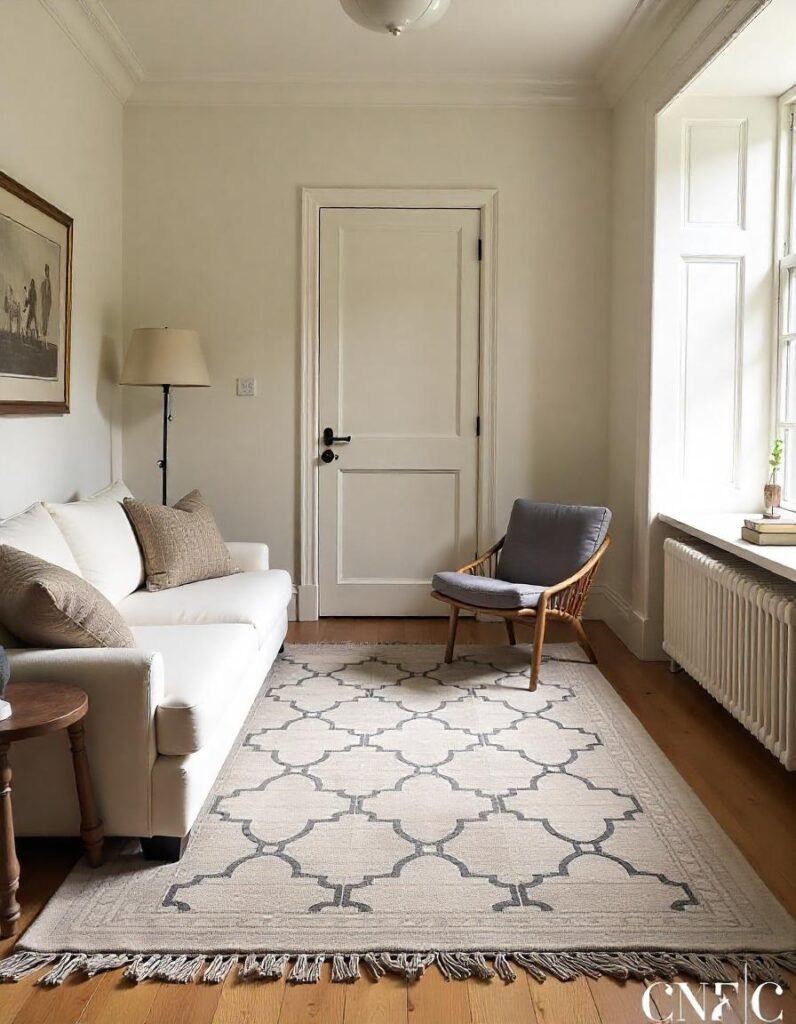
Before committing to a custom wool rug purchase, get answers to these important questions:
- What specific wool type(s) will be used in my rug?
- Can I see actual wool samples rather than just digital representations?
- What is your measurement verification process?
- What construction method do you recommend for my specific needs and why?
- What is the expected timeline from order to delivery?
- What are your quality control procedures?
- Do you provide design assistance or just execute provided designs?
- What warranty do you offer against defects or size issues?
- What maintenance recommendations do you provide?
- Can you share references from previous custom projects?
“The willingness of a company to answer detailed questions often reflects their confidence in their product,” notes consumer advocate James Wilson. “Reputable companies welcome informed customers.”
Red Flags to Watch For
Be cautious when encountering these warning signs:
- Unusually low prices compared to similar quality vendors
- Unwillingness to provide specific wool content information
- No physical samples available before purchase
- Vague or nonexistent warranty terms
- Excessive deposit requirements (over 50%)
- Poor or limited reviews from previous customers
- Pressure tactics to make immediate decisions
- Inability to explain construction methods clearly
- No clear production timeline commitment
- Limited communication options or slow responses
“Trust your instincts if something seems off,” advises consumer protection attorney Lisa Meyer. “Legitimate custom rug providers maintain transparent policies and clear communication throughout the process.”
Custom Wool Rugs for Different Spaces
Different areas in your home have unique requirements for rugs. Tailoring your custom wool rug to each space’s specific needs ensures optimal performance and appearance.
Living Room Considerations
As the heart of most homes, living rooms benefit from thoughtfully designed custom wool rugs:
Size guidance:
- Ideally, all furniture should either sit completely on the rug or have front legs on the rug
- Allow 12-24 inches of rug to extend beyond the furniture arrangement
- Consider traffic patterns when determining size and placement
Design considerations:
- Balance pattern complexity with other room elements
- In open floor plans, use the rug to define the living area
- Consider durability requirements based on usage intensity
Wool selection:
- Medium pile height (½”-¾”) balances comfort and practicality
- Denser wool construction improves longevity in high-use areas
- Pattern and color variety can help disguise normal soil in family rooms
“Living room rugs set the foundation for your entire design scheme,” explains interior designer Amanda Lewis. “A custom size wool rug allows you to perfectly frame your furniture arrangement without awkward gaps or overhang.”
Dining Room Specifications
Dining areas have unique requirements for custom wool rugs:
Size recommendations:
- Extend at least 24″ beyond table edges on all sides
- Ensure chairs remain on the rug even when pulled out
- Consider table expansion for special occasions
Practical considerations:
- Choose flat-woven or low pile (¼”-½”) for easier chair movement
- Select darker colors or patterns to conceal food spills
- Consider defined borders to frame the dining area
Shape selection:
- Match rug shape to table shape (rectangular, oval, round)
- Maintain consistent border around perimeter
- Consider custom shapes for unique dining arrangements
A 2023 designer survey revealed that 84% of professional interior designers prefer custom size rugs for dining areas specifically because of the need for precise fit with table and chair arrangements [Source: Designer Insights Magazine].
Bedroom Placement Strategies
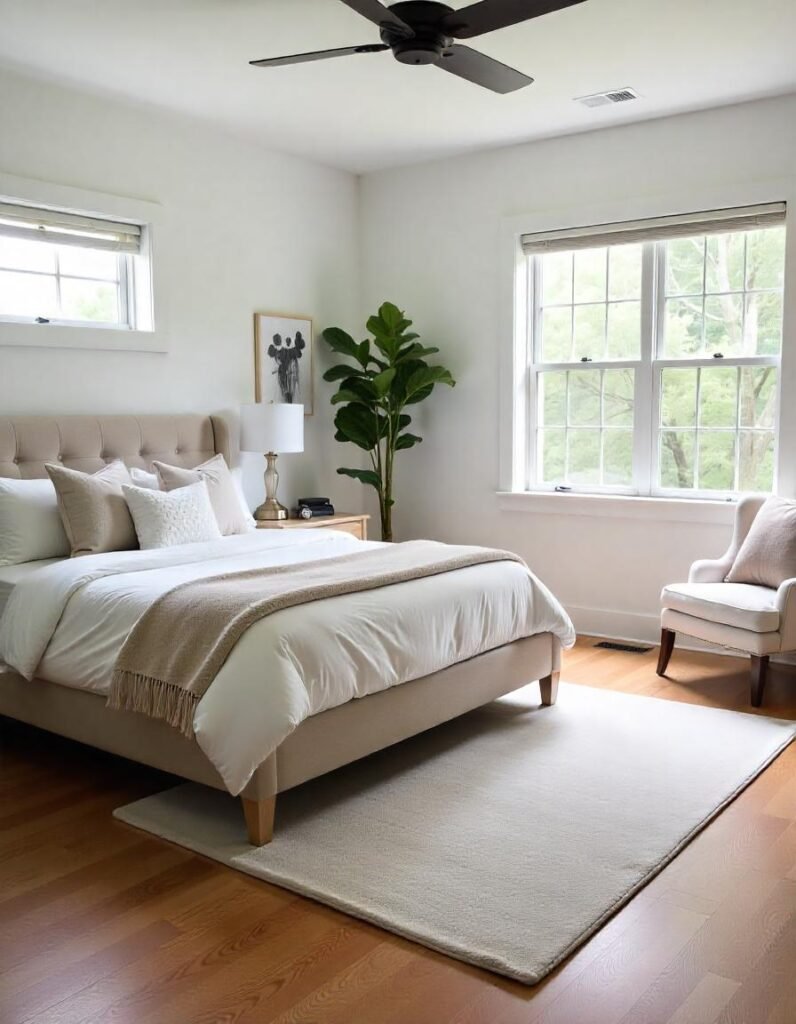
Custom wool rugs create luxurious comfort in bedrooms:
Traditional placements:
- Under the bed extending 18-24″ on sides and foot (not necessarily headboard)
- Runners pair alongside the bed in larger rooms
- Accent rug at the foot of the bed only
Size considerations:
- For under-bed placement, account for nightstands (on or off rug)
- Consider the visual weight in relation to the bed size
- Allow for walking comfort around the perimeter
Design elements:
- Higher pile (¾”+) adds softness appropriate for bedrooms
- Subdued patterns promote restful atmosphere
- Cooler colors (blues, greens) enhance sleep-friendly environment
“Bedroom rugs should feel wonderful underfoot,” notes sleep environment specialist Dr. Rebecca Chen. “The tactile experience of a quality wool rug contributes to the bedroom’s function as a relaxation space.”
Hallways and Unusual Spaces
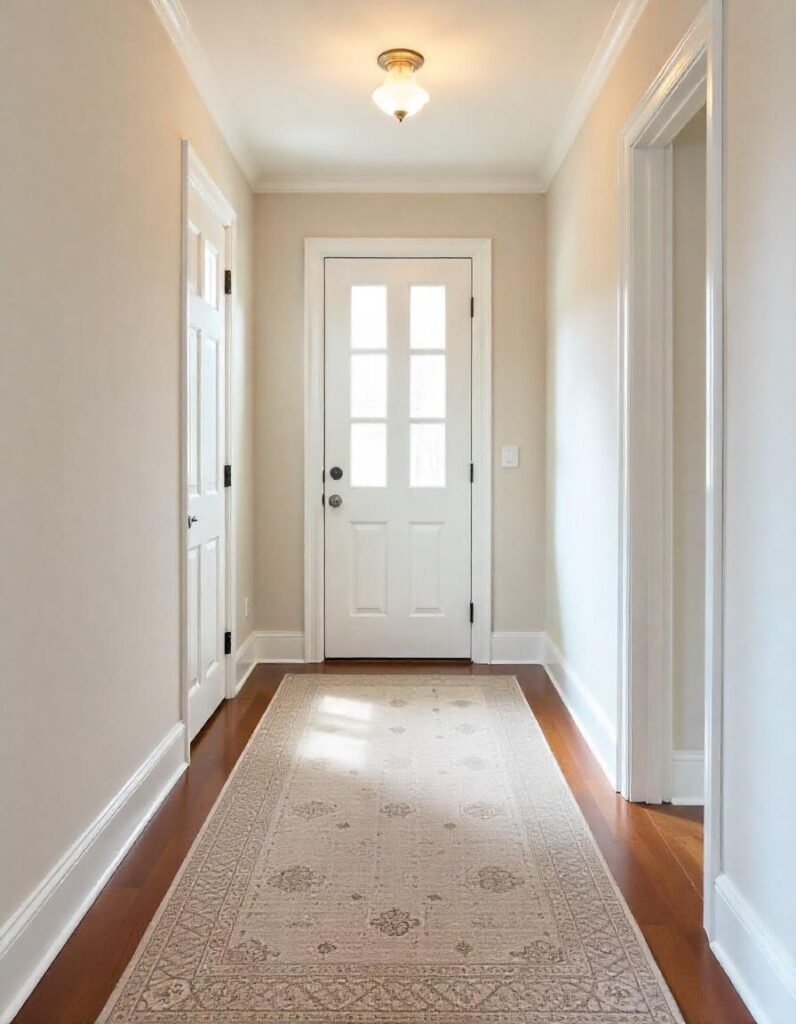
Custom sizing truly shines in challenging areas:
Hallway considerations:
- Custom runners can perfectly fit irregular hallway lengths
- Allow 4-8″ of flooring to show on all sides
- Consider traffic patterns when selecting pile height
Unusual room challenges:
- L-shaped rooms might need custom shapes or multiple coordinating rugs
- Curved walls can be matched with custom curved edges
- Awkward transitions between rooms can be unified with thoughtfully designed rugs
Specialty areas:
- Home offices benefit from denser, lower pile for chair movement
- Sunrooms require more fade-resistant wool varieties
- Entryways need durable construction and soil-hiding designs
“The most impressive custom rugs I’ve seen solve spatial problems that no standard rug could address,” shares architectural designer Thomas Wong. “They transform challenging areas into design features.”
Conclusion
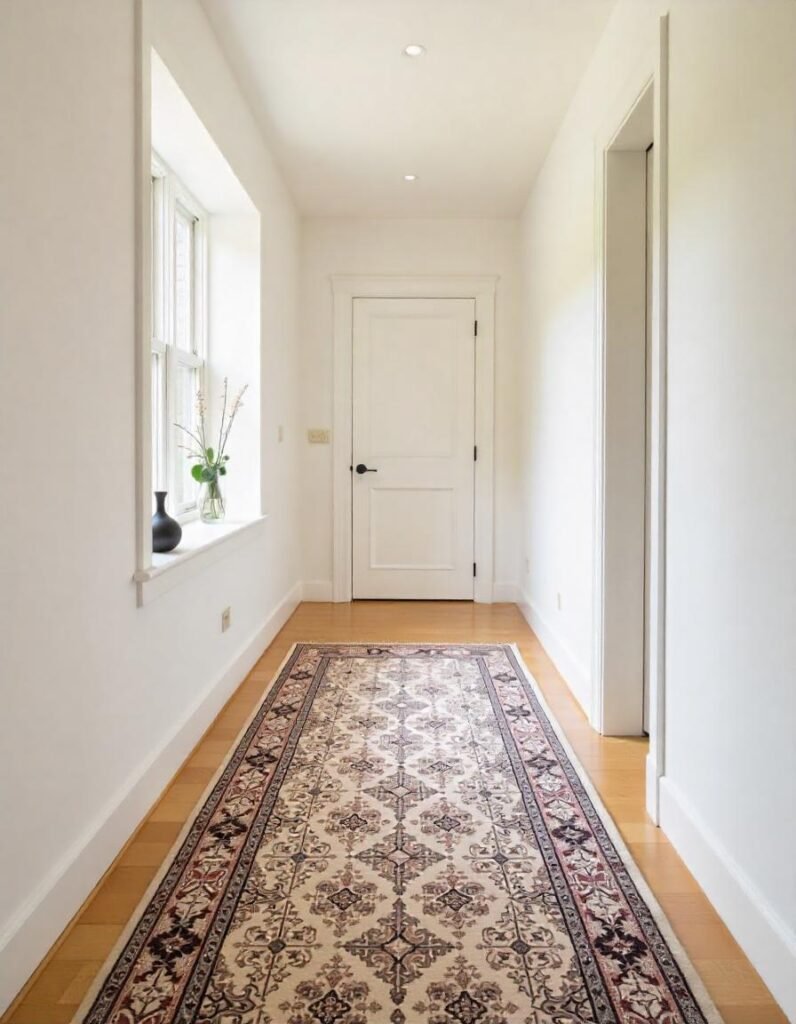
Custom size wool rugs represent a perfect marriage of practical necessity and aesthetic excellence. By embracing bespoke dimensions and personalized design, you create floor coverings that perfectly complement your home both functionally and visually.
Key Points to Remember
As you consider investing in a custom wool rug, keep these essential insights in mind:
- Perfect fit matters: The difference between “almost right” and “exactly right” transforms how your space looks and functions
- Wool offers superior performance: The natural benefits of wool—durability, stain resistance, comfort, and appearance—justify its selection
- Quality construction ensures longevity: Understanding construction methods helps you make appropriate choices for your specific needs
- Proper care maximizes your investment: With correct maintenance, your custom wool rug will provide decades of beauty and service
- Design possibilities are limitless: The freedom to specify every aspect of your rug allows for truly personalized expression
“Custom size wool rugs represent one of the few home furnishings that combine daily practical use with genuine investment potential,” observes home economics expert Dr. James Wilson. “Their ability to maintain both function and beauty over decades makes them uniquely valuable in our increasingly disposable consumer culture.”
Final Recommendations
For those ready to explore custom wool rugs, these final suggestions will help guide your journey:
- Start with precise measurements of your space before considering design elements
- Collect inspiration from multiple sources to clarify your preferences
- Request wool samples to evaluate in your actual space under different lighting
- Consider timing carefully, especially for special occasions or renovations
- Invest in quality appropriate to the expected lifespan you desire
- Don’t overlook the importance of pad selection for maximum durability and comfort
“The most successful custom rug projects begin with thorough planning,” advises procurement specialist Sarah Chen. “Taking time to consider all aspects before production begins ensures results that will satisfy for decades.”
Your Custom Wool Rug Journey
Ready to transform your space with a perfectly fitted wool rug? Take these next steps:
- Measure your space using the techniques described in Section 3
- Research reputable custom rug providers in your area
- Request consultations with at least two different sources
- Establish your budget parameters based on quality and construction
- Begin the exciting process of creating a floor covering perfectly suited to your unique needs
With thoughtful planning and quality craftsmanship, your custom size wool rug will become not just a beautiful design element but a cherished investment that enhances your home for many years to come.
